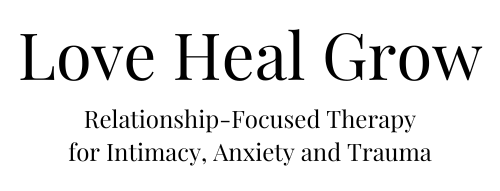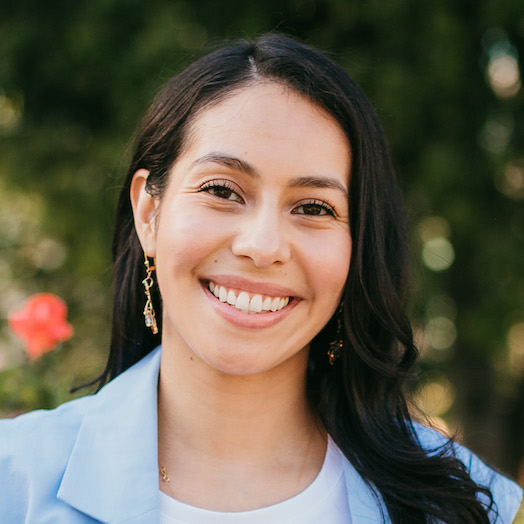
While many of us have a number of healthy, nourishing, and supportive relationships in our lives, it is not uncommon for people to have a share of toxic, traumatic, or abusive relationships as well.
Now, many people think that these traumatic, abusive, or otherwise toxic relationships are always easy to spot — and, therefore, avoid or cut out. Unfortunately, this is not the case.
Sometimes these relationships seem unavoidable — whether due to familial connection or lack of places to go if you leave the unhealthy situation. Sometimes they are what form someone’s perspective on what a certain relationship should be like — such as a parent-child relationship or a romantic relationship — so that person doesn’t know what they should be feeling or experiencing in a healthy relationship. Additionally, sometimes these abusive situations can actually make a relationship feel closer rather than distant, which makes us more reluctant to sever the unhealthy connection. This is typically referred to as a “trauma bond,” and it can be incredibly harmful to not only the victim’s self-esteem but also their overall health.
Today, we’ll dive deeper into the concept of trauma bonding — including how to recognize signs of it — as well as how you can break these types of unhealthy bonds in your life.
What Is a Trauma Bond?
Put simply, a trauma bond is the type of attachment an abused individual feels towards their abuser.
These bonds are born out of the basic human need for attachment, which turns into dependence on the abuser because of the abusive situation. This dependence and trauma bond is then further cultivated by the abuser through the cycle of abuse and reassurance until the entire situation becomes extremely emotionally complex, and the victim feels as if there is no other option but to go along with the behavior.
Typically, this type of bond is formed in relationships that have a cyclical pattern of abuse followed by reassurance or proclamations of love, regret and need for the abused individual. And it is one of the reasons why leaving an abusive relationship can be so emotionally confusing or overwhelming for many individuals.
What Causes These Bonds?
Truthfully, trauma bonding can happen in any type of abusive situation, regardless of the amount of time the situation lasts.
However, most commonly, this type of bonding happens in situations where the abuser expresses love to their victim and reassures them that the abusive behavior will not happen again every time it occurs. It is this cycle of abuse and positive reassurance and reinforcement that tricks the abused individual into believing that the abuser will change or that they are “not all bad.”
As mentioned above, trauma bonding can occur in any type of abusive situation, but listed below are some of the most common situations that trigger this type of bonding.
- Sexual abuse
- Incest
- Domestic abuse
- Kidnapping
- Cults
- Human trafficking
- Elder abuse
Signs of Trauma Bonding
While trauma bonding arises from abusive situations, not all abusive situations result in this type of bond. This said individuals who have developed a trauma bond may not be aware of it until they start looking for signs.
The signs of a trauma bond include:
- Abuse that follows a cycle where the abuser tries to “make up” for the abusive incident each time one occurs
- The abuser promising to change but never does
- The abuser isolating the victim from friends, family, and other loved ones or support systems
- The abuser controlling the victim through gaslighting, manipulation, or other means
- The abuser “winning over” the friends and family of the victim and getting them to side against the victim
- The victim feeling at fault for the abuse
- The victim feeling uncomfortable or as if they are unable to leave the abusive situation
- The victim lying to friends and family to hide the abuse
- The victim making excuses or covering for the behavior of the abuser
- The victim continuing to trust the abuser after a continuous cycle of abuse and manipulation
The Impact of Trauma Bonding
The primary (and most detrimental) impact of a trauma bond is that the victim develops positive feelings for their abuser, which leads them to stay in the abusive situation rather than escape it. This choice leads to continued abuse, and in many cases, can lead to physical harm or, at worst, the death of the victim.
If an individual is able to separate themselves from the abuser, the mere existence of the trauma bond can lead to continued issues with low self-esteem, emotional or physical trauma, and many other lasting effects — such as anxiety or depression. Having experienced this type of bonding can also increase one’s likelihood of promoting an intergenerational cycle of abuse that can cause harm to their children as well.
How to Break a Trauma Bond
It is important to emphasize here that a trauma bond is nothing to be ashamed of. This type of bond is a natural consequence of our minds searching for hope in difficult situations and relying on our survival instincts to keep us safe in an unhealthy environment.
This said, once you have discovered a trauma bond in your life, you likely want to know how you can move past it.
Focus on the Facts
If you are in an abusive situation, you need to focus on the truth — look at the patterns and truly understand what the relationship is doing to you. Think about how many times you experienced abuse in the relationship and how many times your abuser promised they’d change. Ask yourself how your abuser’s choice to abuse you has impacted you and how it will continue to impact you moving forward.
Looking at an abusive situation from a fact-forward and analytic perspective can help you realize what the situation is and how it is affecting you.
Build Your Self-Esteem
An abusive situation can dramatically lower your self-esteem and make you feel less worthy of getting out of the situation and finding a healthy and fulfilling relationship. Because of this, taking the time and making an active effort to focus on speaking kindly to yourself and taking care of your mind and body through acts of self-care is absolutely essential.
Remind yourself that you are in charge of your actions and that you do not need someone else to find value in you for you to value yourself.
Plan to Get Out of the Abusive Situation Safely
If you’ve already gotten out of the abusive situation, you may not need this tip. However, if you are currently in an abusive situation, the best thing you can do is create a safety plan to get out of it.
Realize that you do not need to figure everything out on your own. If you aren’t sure where to begin or what you need to include in your plan, you can contact a support hotline like the National Domestic Violence Support Hotline or speak to a trusted healthcare individual, such as a therapist, to help you come up with the best way for you to get out of the bad situation you are in.
Seek Support
One of the characteristics of abuse (especially abuse that forms trauma bonds) is the isolation of the victim. This is because it is much easier to abuse someone when they won’t leave — when they have nowhere else to go. Because of this, one of the best ways to heal from abuse and break a trauma bond is to seek the support you need from others. This could mean joining a support group for individuals who have been in or are in abusive situations like yourself.
Another type of support you can get to help you work through and overcome your trauma is through therapy. In therapy, you can learn all of the techniques and strategies you need to work through the challenging emotions you are feeling after leaving an abusive situation, as well as help you discover how to avoid these situations in the future. Therapy can also be an excellent tool in helping you discover ways to practice self-care and improve your self-esteem after the toll abuse takes on it.
So, if you are in an abusive situation and are looking for guidance on how to safely escape it, or you are looking for ways to break your trauma bond and heal from the abuse you experienced in a past relationship, please do not hesitate to reach out to Love Heal Grow today.
























